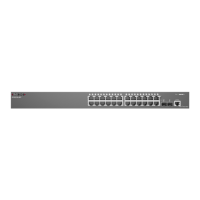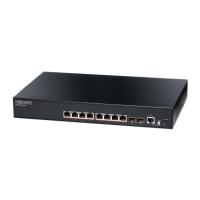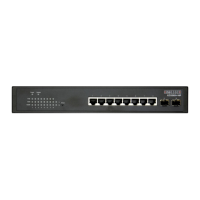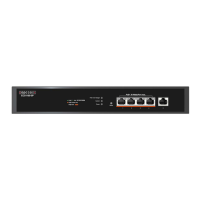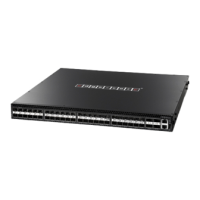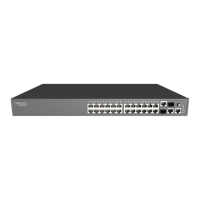Chapter 11
| Interface Commands
Transceiver Threshold Configuration
– 366 –
Transceiver Threshold Configuration
transceiver-monitor
This command sends a trap when any of the transceiver’s operational values fall
outside of specified thresholds. Use the
no
form to disable trap messages.
Syntax
transceiver-monitor
Default Setting
Disabled
Command Mode
Interface Configuration (SFP/SFP+ Ports)
Table 71: show interfaces switchport - display description
Field Description
Broadcast
Threshold
Shows if broadcast storm suppression is enabled or disabled; if enabled it also
shows the threshold level (page 415).
Multicast Threshold Shows if multicast storm suppression is enabled or disabled; if enabled it also
shows the threshold level (page 415).
Unknown Unicast
Threshold
Shows if unknown unicast storm suppression is enabled or disabled; if enabled
it also shows the threshold level (page 415).
LACP Status Shows if Link Aggregation Control Protocol has been enabled or disabled
(page 383).
Ingress/Egress Rate
Limit
Shows if rate limiting is enabled, and the current rate limit (page 1023).
VLAN Membership
Mode
Indicates membership mode as Trunk or Hybrid (page 465).
Ingress Rule Shows if ingress filtering is enabled or disabled (page 465).
Acceptable Frame
Type
Shows if acceptable VLAN frames include all types or tagged frames only
(page 463).
Native VLAN Indicates the default Port VLAN ID (page 466).
Priority for
Untagged Traffic
Indicates the default priority for untagged frames (page 524).
Allowed VLAN Shows the VLANs this interface has joined, where “(u)” indicates untagged and
“(t)” indicates tagged (page 463).
802.1Q-tunnel
Status
Shows if 802.1Q tunnel is enabled on this interface (page 469).
802.1Q-tunnel
Mode
Shows the tunnel mode as Normal, 802.1Q Tunnel or 802.1Q Tunnel Uplink
(page 470).
802.1Q-tunnel TPID Shows the Tag Protocol Identifier used for learning and switching packets
(page 473).

